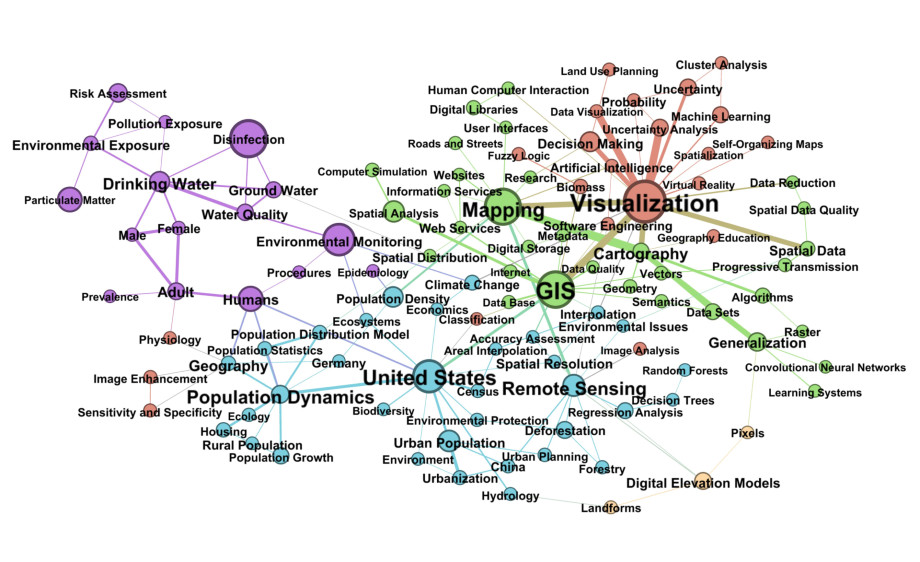New Publication
Special Issue in Cartography and Geographic Information Science (CaGIS)
A special issue was put together to recognize Prof. Barbara Buttenfield's 35+ years of contributions to Cartography and GIScience. It containis five co-authored articles by her former students, collaborators, and GIScience scholars who were influenced by her work, including GIVA members.

Special Issue in Cartography and Geographic Information Science (CaGIS)
Editorial
Michael Leitner, Sara Fabrikant, André Skupin
This special issue (SI) recognizes Professor Emerita Barbara P. Buttenfield’s 35+ years of contribution to Cartography and Geographic Information Science (GIScience). Since her earliest publications on line generalization in the mid-1980s, she evolved into an internationally recognized scholar, known for her leadership in diverse research areas including cartographic visualization and modeling, multi-scale geographic representations, spatial data infrastructure, digital libraries, and environmental modeling. Barbara Buttenfield has been the recipient of many academic honors and awards, including the inaugural 2001 UCGIS Lifetime Achievement Award in GIScience Education and the 2020 AAG Distinguished Teaching Honors Award. Her legacy in research, teaching, and service continues through her numerous students, who are actively contributing to GIScience in academia, government, and the private sector, including the guest editors of this SI.
A study on the aptitude of color hue, value, and transparency for geographic relevance encoding in mobile maps
Marco Olivieri, Tumasch Reichenbacher
Depicting the right amount of information on mobile maps is still challenging. With this research we investigate which of the three visual variables hue, value, and transparency optimally directs visual attention to the correct encoding of the geographic relevance of on small displays? We hypothesize that transparency is best suited to let users see symbols in the correct order of high to low relevance and that they intuitively understand this encoding of symbols for value and transparency, but not for hue. In a user study with 27 participants, we tested the suitability of the three visual variables for mobile maps with eye tracking. Results for a perceptual viewing task where no further knowledge or a task was provided, showed no significant differences between the three visual variables for time to first fixation and scanning the symbols in the correct order of relevance. A second search task for the most relevant restaurant, results showed that only transparency seems to reliably encode geographic relevance. “Darker is more” is only partially understood and the traffic light metaphor is unsuitable for encoding ordered geographic relevance on mobile maps. These results are in line with other work and offer guidelines for mobile map design.